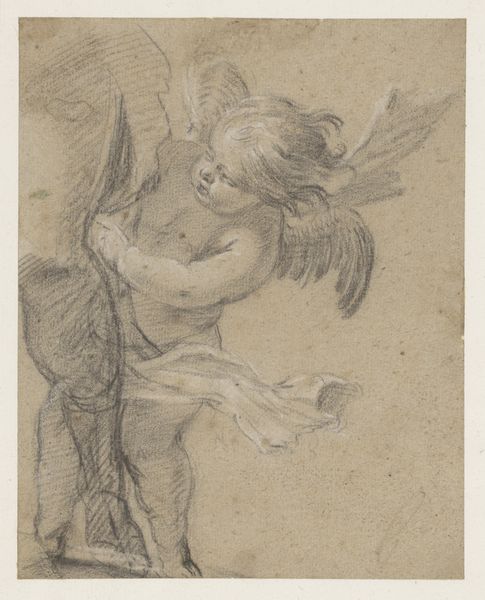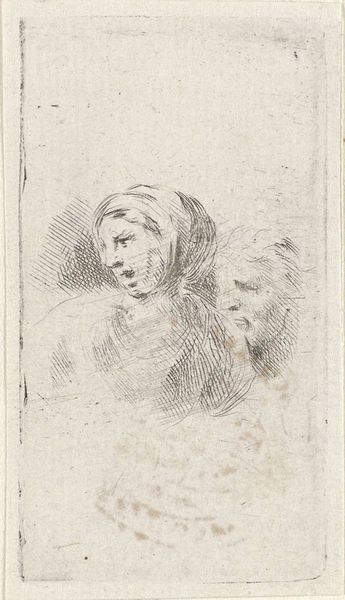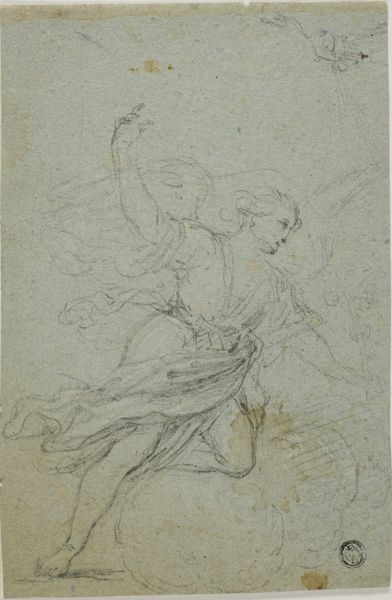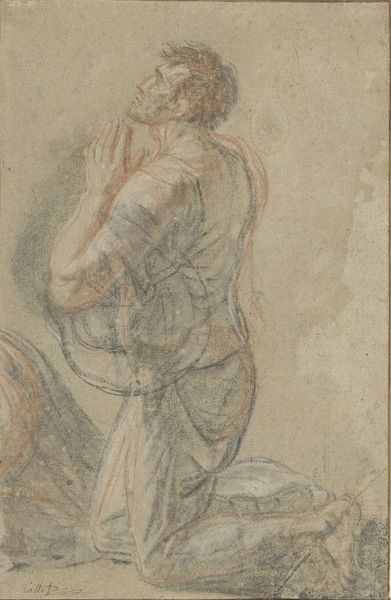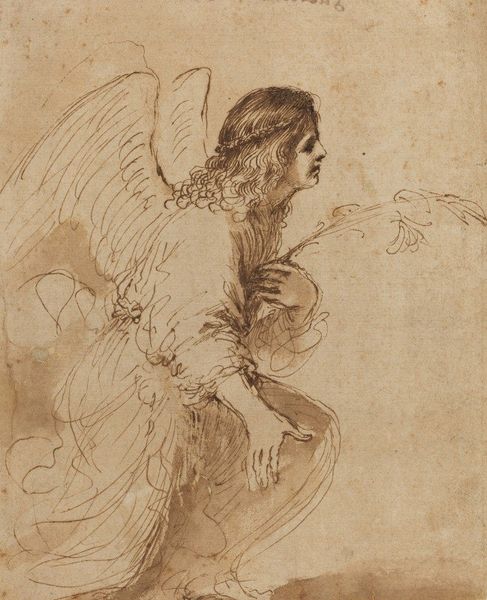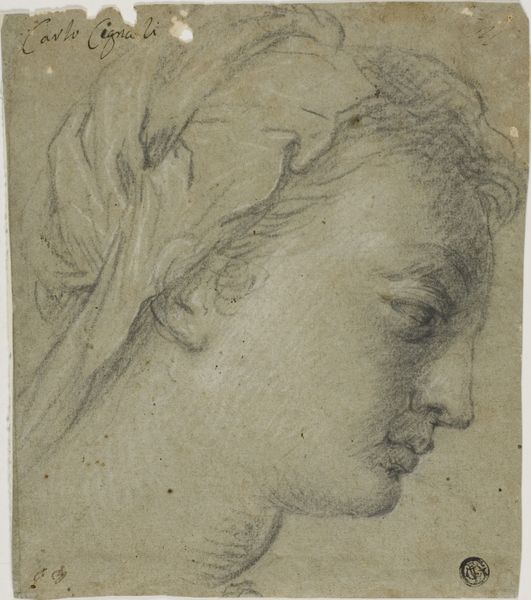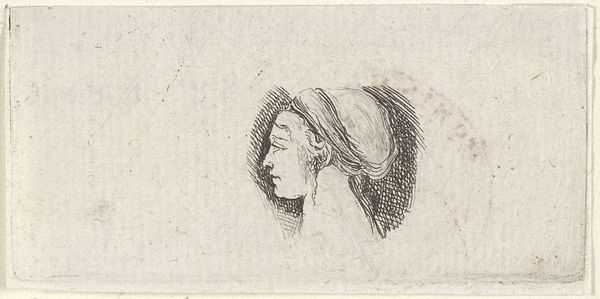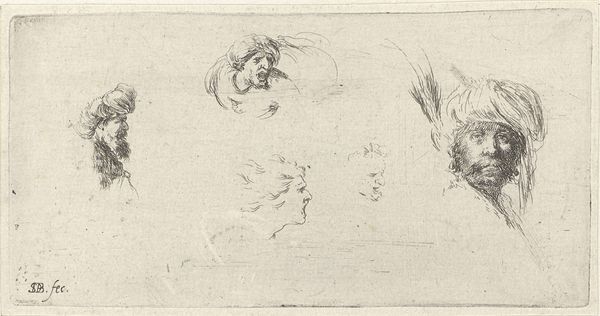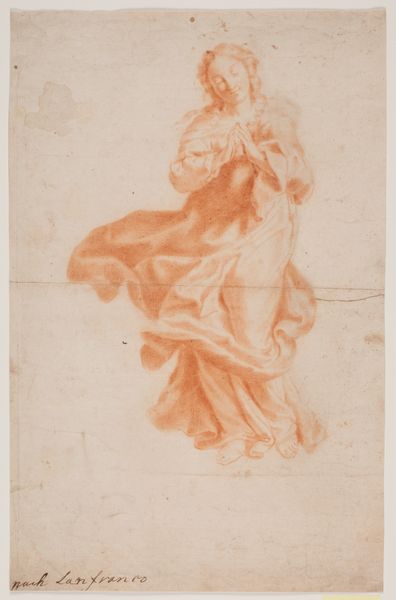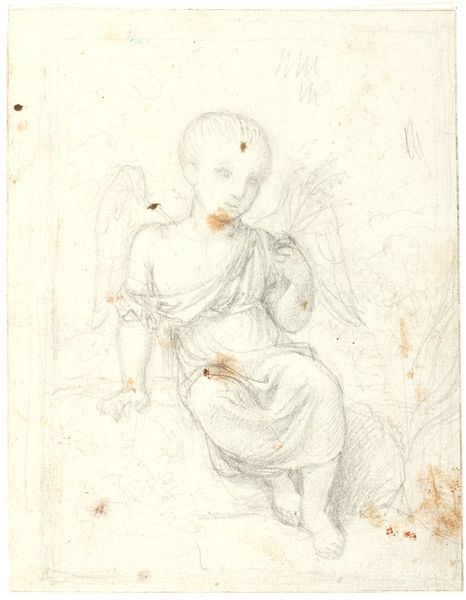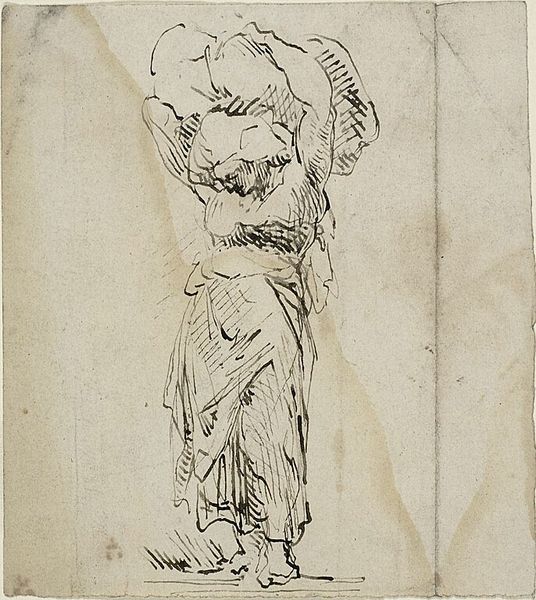
Hoofd van vrouw met open mond en een hoofd in profiel naar links 1620 - 1664
0:00
0:00
stefanodellabella
Rijksmuseum
drawing, paper, ink
#
portrait
#
drawing
#
baroque
#
pencil sketch
#
figuration
#
paper
#
form
#
11_renaissance
#
ink
#
line
#
profile
Dimensions: height 59 mm, width 39 mm
Copyright: Rijks Museum: Open Domain
Curator: This is Stefano della Bella’s "Hoofd van vrouw met open mond en een hoofd in profiel naar links," created sometime between 1620 and 1664. It's currently held in the Rijksmuseum. Editor: It has a strikingly immediate quality. Raw, even. You can almost hear the woman gasping. The lines are so economical. Curator: Indeed. The technique—a combination of ink and pencil on paper—allows for this immediacy. Think about the market for prints at this time; quick, reproducible images were increasingly in demand. Editor: And accessible. This wasn't about the expensive, singular commission, but more about a democratized visual experience. The hatching and cross-hatching...it's functional, built to multiply and spread. This reveals a particular use of the hand and material labor to supply visual data at scale. Curator: Precisely. Bella was working within a system of artistic production increasingly shaped by market forces. His patrons valued prints as visual records but they were often more concerned with imagery. The placement of the woman, with a possible figure next to her also demonstrates their social values within portraiture. Editor: What interests me most is the open mouth; it disrupts the conventions of composure usually depicted in portraits. Is she shouting, singing, or simply surprised? It could be a window into some kind of raw, uncensored expression or something work-a-day and simple, yawning, perhaps? The medium supports this in its very own expression, through its own materials, labor and value as part of an industry. Curator: I think your point speaks to a certain interest in capturing the interior states of individuals. This idea, intertwined with religious change as well as new thoughts on humanism led artists to explore emotion in an interesting way at the time. These are all linked with material expression. Editor: It all seems quite radical, for the time. Looking closer, it really underlines the impact of materials used in artwork throughout the Renaissance, where we can consider portraiture across wider cultural production methods. Curator: I concur, and considering the political contexts in this region in Europe we have many things to unpack, regarding gender roles as well as the religious positionality and market interests. Editor: Indeed, seeing this from a materialist approach really unlocks other possible interpretations as well as broader considerations.
Comments
No comments
Be the first to comment and join the conversation on the ultimate creative platform.
